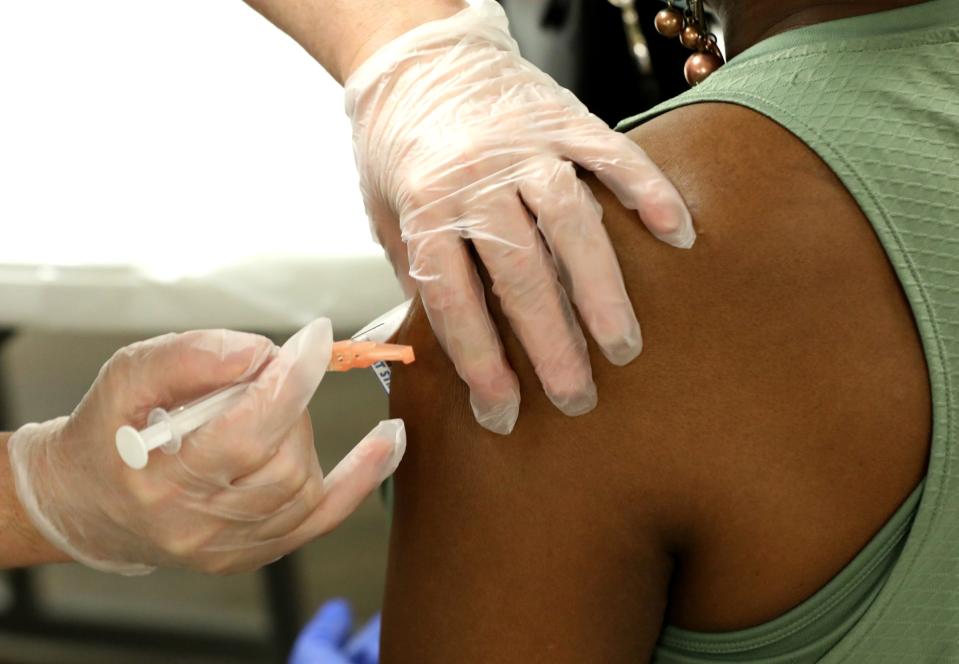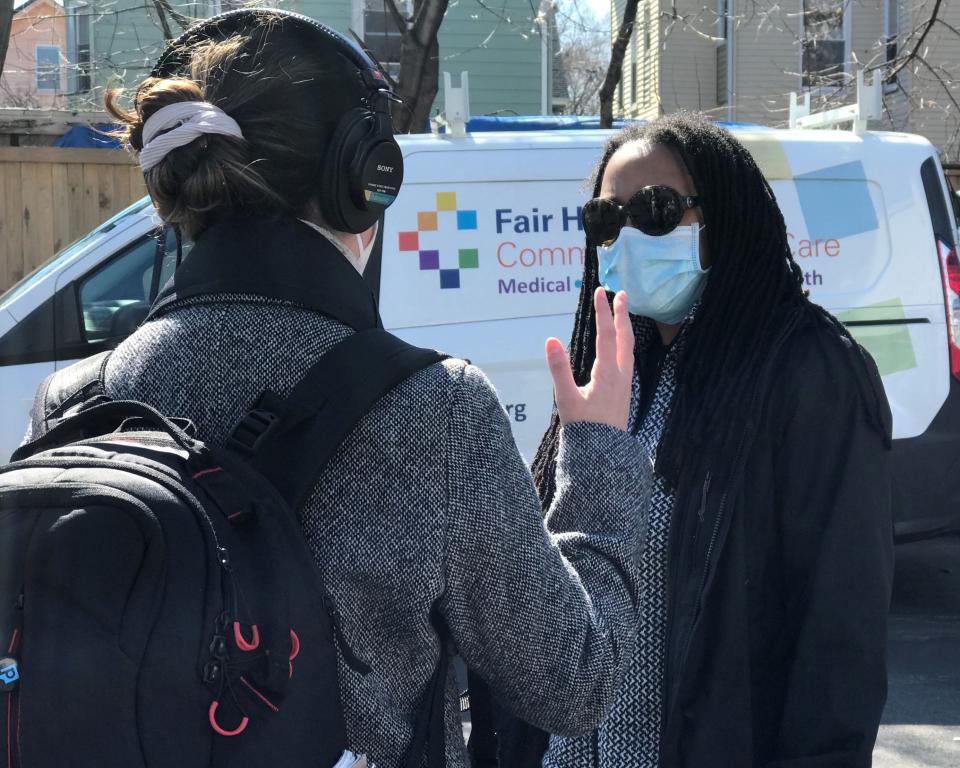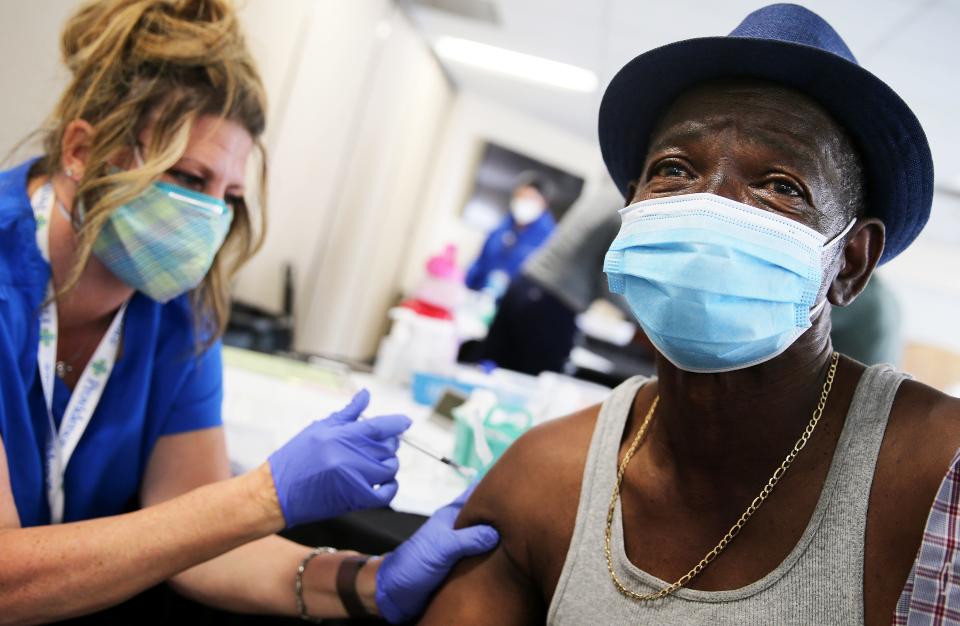‘Door-to-door. That’s how you get it done’: Inside the White House’s push to get people of color COVID-19 vaccines
WASHINGTON – Armed with more racial data on vaccination rates, the Biden administration is targeting its outreach efforts, including a door-to-door campaign, in the latest push to get more people of color vaccinated by July 4.
"We absolutely cannot beat this virus without making sure there's a plan that works for everyone and works for all communities,'' Marcella Nunez-Smith, chairwoman of the White House COVID-19 Health Equity Task Force, said at a briefing Tuesday.
Earlier this year, President Joe Biden announced his goal to see 70% of American adults with at least one dose of the vaccine by July 4.
Of the 57% of Americans who had one dose of the vaccine by June 7, nearly two-thirds were white, 15% were Hispanic, 9% were Black, 6% were Asian and 1% were American Indian or Alaska Native, according to the Kaiser Family Foundation. The global pandemic has disproportionately impacted communities of color, with high rates of cases and deaths.

Nunez-Smith spoke recently with USA TODAY about the administration’s efforts to push for more racial data and address inequities in the response to the pandemic.
“The better the data, the better we're able to say, ‘OK, we need to dig deeper to do more in X area,’" Nunez-Smith said. “The national aggregated data are really important when we look at reaching the president’s goal of 70% by July 4. That's very appropriate to have those kinds of national goals, but when it comes to equity those goals have to be super local.”
The administration has turned to faith leaders and community-based organizations to set up vaccination sites in churches and barbershops, and partnered with Uber and Lyft to provide free rides to vaccine sites through July 4.
"Equity work is hyperlocal,'' Nunez-Smith said. "I have to take my hat off and acknowledge that it's really state and local jurisdictions that are going to lead on everything to do with equity."

It is also encouraging employers, by offering tax credits, to allow workers time off to get vaccinated. Nunez-Smith said officials are working with groups to use mobile vaccination units and urge pharmacies to offer vaccines to walk-in customers.
Nunez-Smith said there’s still confusion about whether people must show documentation to get a vaccine and if there’s a cost. They don’t and it’s free.
“You just have to get correct information out there and also have to make sure we address the barriers that might be keeping people who want to get vaccinated from being able to do that,” she said.
Questions and answers with Nunez-Smith have been edited for length and clarity:
Q: How challenging has it been to convince people of color to get vaccinated?
A: I'm trying to work hard to counter this narrative that Black and brown people don't want to be vaccinated. Lots of groups and communities need information, need questions asked and answered. But I think the top line work is making sure people who want to get vaccinated can. And so all of that is about making sure that access is there.
Q: You named several efforts underway, but studies still show lower rates of vaccinations for communities of color, particularly Latinos and Black Americans, compared to white people. How optimistic are you even with those efforts that you can close that gap?
A: I'm very optimistic. What we need is for people to share their own vaccination stories…People want to hear what the motivations were - like why did I get vaccinated, which is about keeping my family safe and my community safe. I’m a physician, keeping my patients safe or my colleagues.
Those stories are just out there now and people who have been deliberating, I think, are now getting connected with information that's helpful to them in their decision making.
Q: It’s been more than five months since the administration announced plans to work to improve the collection of racial data. Why is it taking so long? What’s happening on that front?
A: When we first started in January there were about 17 states reporting race, ethnicity for the vaccines. And now there are 48 that are publicly reporting, so great progress there. Now we’re up to about 70% of vaccinations where we have race, ethnicity data for those and that is up for from about 50% a few months back.
There’s definitely progress. I wouldn't say we've stopped, but I think it's important to note that milestone.

Q: Anything else about the data collection that makes it challenging?
A: There is a lot there in terms of just the data structures and infrastructures across the country that need to be modernized … We have seen where there are technical barriers. That’s really important for us to invest in and overcome.
Other things where there might be kind of the politics of it all will be more complicated. But by and large, we just see folks who agree that we need data to drive equity and drive a response and are sort of stymied by data systems.
Q: You said you participated in a door-to-door effort in a community in Connecticut. How was that?
A: It was amazing … I said to the group that gathered that that was equity in action.
Q: Did you convince anybody to get the shot?
A: Oh, yeah. I mean, as a collective, I think the numbers are now over 5,000 doors that (have been) knocked on in that neighborhood over a couple weekends. I think around 7,000 people got vaccinated. The numbers are still telling, but that’s success by any measure in terms of helping people get vaccinated. And that's what you have to do when you talk about the last mile - it is door to door. That's how you get it done.
Follow Deborah Berry on Twitter: dberrygannett
This article originally appeared on USA TODAY: White House ramps up COVID vaccine efforts in communities of color

